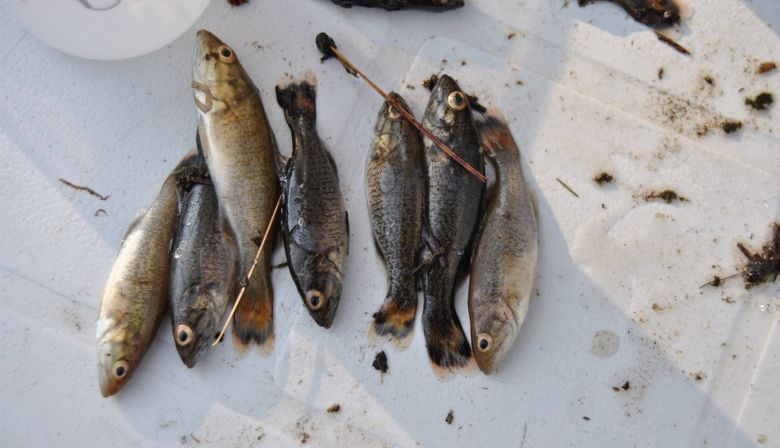
Subscribe & stay up-to-date with ASF

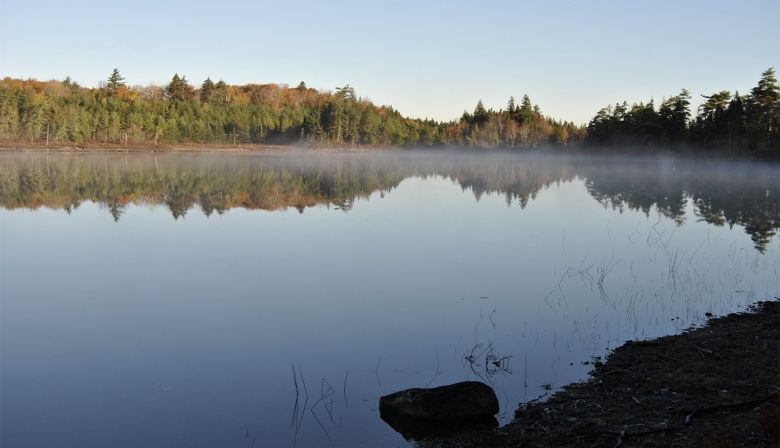
People, usually anglers, have done heavy and irreversible damage to freshwater ecosystems in Nova Scotia by dumping in non-native fish species. The LaHave River and Lake Ainsley in the headwaters of the Margaree are just two of the victims of this inherently thoughtless act
Aquatic invasive fish like chain pickerel and smallmouth bass eat and compete with native species who are caught completely off guard by their appearance. They multiply and spread, establishing populations in a wide variety of habitat. Invasive fish alter entire ecosystems and disrupt fisheries at great cost to the public.
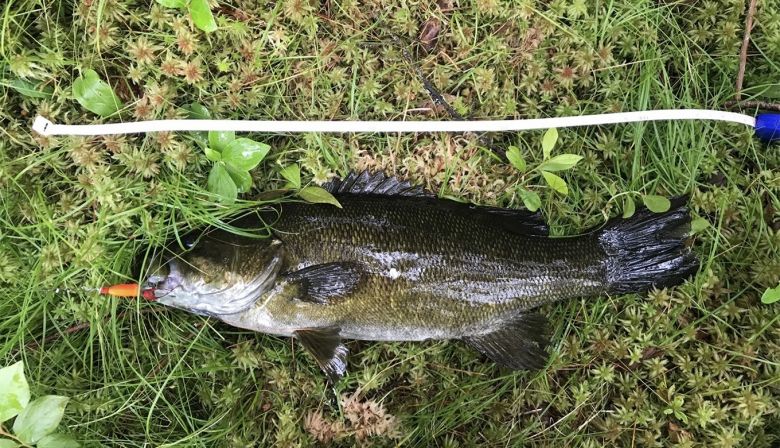
Buhariwalla decided to do some angling instead, another way of monitoring lakes and rivers for invasive species. He pulled up to Piper Lake, part of the St. Mary’s River watershed and about a kilometre from the neighbouring East River watershed where chain pickerel are present. Despite this close proximity, the St. Mary’s was, until then, free invasive fish.
Something bit and pulled hard in Piper Lake. When Buhariwalla pulled it to shore he was doubly surprised; it was an invasive, but not chain pickerel – he had landed a smallmouth bass. Buhariwalla knew his catch was a big deal and immediately alerted his colleagues in the department’s Inland Fisheries Division, setting off a rapid response to a potential biological invasion of Nova Scotia’s longest river.
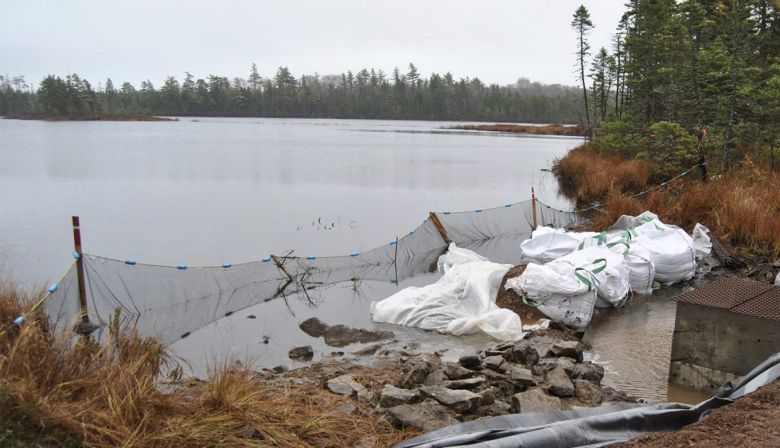
Anglers fanned out to other nearby lakes and environmental DNA samples were widely collected. The goal was to assess the size of the population in Piper Lake, determine if smallmouth had migrated out, and whether there had been other introductions nearby.

Piper Lake was immediately closed to all angling and enforcement officers were called in. They quickly found evidence of angling around Piper Lake, which prior to the illegal introduction of smallmouth bass had no recreational fishery – a sign that someone knew the fish were here. Investigators identified a suspect, but no charges were ever laid.
After several weeks of work, officials concluded that smallmouth bass were only in Piper Lake and had not spread downstream of the outflow. The population in the lake had been there since at least 2018, maybe longer. Dozens of large adults, 291 young-of-the-year, and 70 juveniles were removed. The search for smallmouth also revealed what other species live in the lake: American eel, yellow perch, golden shiner, common shiner, banded killifish, several dace species, creek chub, and brown bullhead.
Weighing options
Knowing that smallmouth were momentarily contained in Piper Lake, the team at Nova Scotia’s Department of Fisheries and Aquaculture, led by inland fisheries director Alan McNeill, began to look for ways to eradicate bass before they spread. It is accepted knowledge that control efforts for invasive fish species, like catching as many as possible and maintaining barriers, can slow the spread, but are not effective for eradication. The situation spilling out of Miramichi Lake in New Brunswick is a poignant, recent example.
As winter approached, provincial staff tried to use the bathymetry of Piper Lake against smallmouth bass. With a maximum depth of 3 meters, pumps were used to suck as much water out of the lake as possible, drawing levels way down in hopes of triggering winterkill – when water under ice is depleted of oxygen.
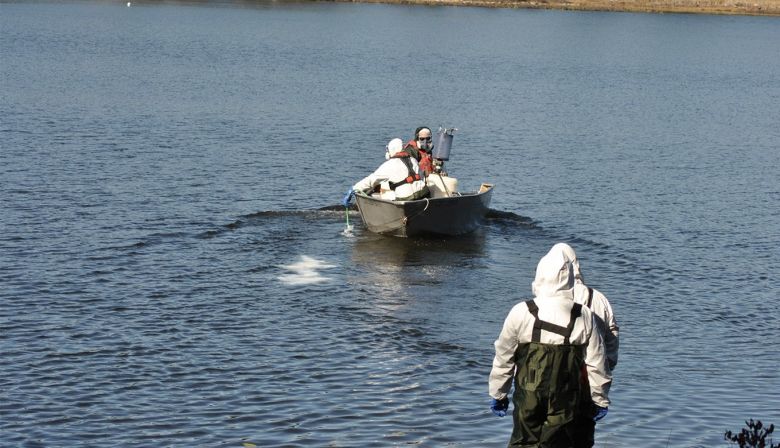
When spring 2020 came, and field crews were able to return to Piper Lake, they found that not only had smallmouth survived, but they recently spawned in the lake, introducing a new year class and increasing abundance. At this point, it was decided that eradication using a rotenone product was the only effective and safe option left.
While Nova Scotia has accepted the authority from DFO to authorize the use of rotenone, to avoid perceptions of conflict of interest as the proponent and regulator, the inland fisheries team prepared an application and submitted it to Fisheries and Oceans Canada’s aquatic invasive species program. Barely 12-months since the discovery of smallmouth bass in the St. Mary’s watershed, permits and approvals were in place to eradicate them.
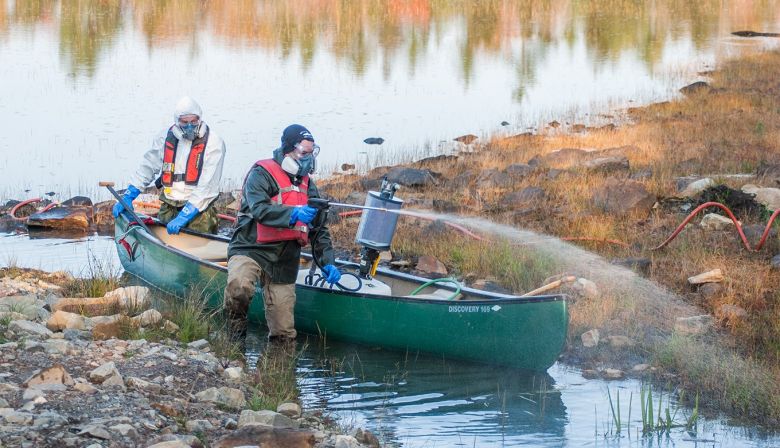
Go time
With final safety and equipment checks complete, under clear October skies, the Nova Scotia government crew began mixing five litres of rotenone product with 95 litres of water in a custom built dispenser. Once the reservoir was loaded in a canoe, a team of two began walking it around the edge of Piper Lake and spraying the shoreline. The container was transferred to a small boat with an outboard motor and using GPS guidance a crew ran transect lines back and forth on the lake, dispensing the rotenone under the surface. Fish began to die quickly.
Soon after the treatment stopped and the all-clear was given, people started collecting mortalities for disposal at an approved site. As the clean-up continued over the next few days, sentinel fish held in cages in the lake were checked – all dead – and sentinel fish held in cages below the treatment area were all alive. Things appear to have gone according to plan, with hundreds of smallmouth bass among all the other fish collected, however McNeill and his team are not ready to declare success just yet.

As Nova Scotia has demonstrated, eradication using rotenone is a powerful and effective tool for dealing with invasive species, but its a reaction to an entirely preventable problem. We all know that second hand smoke can kill, and no one wants to be a litterbug. It’s time we learned out lesson about invasive fish too.